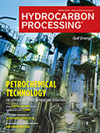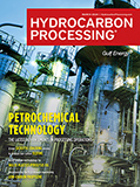Greenhouse Gases
Yokogawa releases OpreX carbon footprint tracer to support decarbonization in the process manufacturing industries
Yokogawa Electric Corporation announced the development and release of OpreX Carbon Footprint Tracer, a solution in the OpreX Transformation lineup that targets the carbon footprint management needs of companies in the process manufacturing industries.
Spain's Cepsa, Apical begin work on Southern Europe's biggest biofuels plant
Spain's Cepsa and Apical Group's Bio-Oils unit began building what will be Southern Europe's largest biofuels plant able to produce 500,000 metric tons of renewable diesel and SAF per year, the companies said.
Airbus and TotalEnergies sign strategic partnership for sustainable aviation fuels
Airbus and TotalEnergies have signed a strategic partnership to address the challenges of decarbonizing aviation through sustainable aviation fuels.
Technip Energies invests in the United Airlines Ventures Sustainable Flight Fund
This innovative fund is strategically designed to leverage cross-industry support, providing start-ups working on SAF research, production and technology, with both financial and strategic capital.
Asia's SAF projects and agreements
SAF, or alternative fuel made from renewable sources that are used to power aircraft, is crucial for the aviation sector to reach its goal of net zero carbon emissions by 2050, but its adoption remains in a nascent phase. Following is a look at other SAF projects and agreements in the Asia-Pacific region.
Digitalization in refineries: A strategic roadmap for operational excellence—Part 1
The refinery industry is one of the biggest industries worldwide. According to Statista, the global oil refinery capacity tipped 100 MMbpd in 2022. This capacity reflects nearly a twofold increase since 1970.
Plastic pyrolysis oils as feedstock for steam crackers: Opportunities and challenges—Part 2
Plastic waste is a worldwide challenge. To reduce its carbon dioxide (CO<sub>2</sub>) footprint, the plastics industry is striving to increase circularity by using plastic pyrolysis oils (pyoils) from waste plastics as steam cracker feedstock.
Advanced analytics solutions propel decarbonization and sustainability initiatives
Industrial process manufacturers and refiners are facing a storm of disruptive challenges. First and foremost, calls to mitigate climate change have taken a central position and must be prioritized, driving the decarbonization efforts of industrial and manufacturing processes.
Planning a practical path to net-zero
Many companies around the world and across the size spectrum have committed to aggressive carbon-neutral targets and are now looking to their production sites for practical plans on how to achieve these goals.
Editorial Comment: Digital transformation: The many pathways to operational and project excellence
Throughout the history of the modern refining and petrochemicals industries, asset owners, project developers, and equipment and service companies have devoted countless expenditures in the research and development of new technologies.

- Renewable fuels project in Canada begins production 4/19
- Jet fuel demand growth lags as air traffic exceeds pre-pandemic level 4/19
- Jet2.com to use SAF at London Stansted Airport 4/19
- Neste and New Jersey Natural Gas target reducing greenhouse gas emissions with Neste MY Renewable Diesel 4/19
- Cepsa and Evos join up for green methanol storage in Spain and the Netherlands 4/19
- Russia's Bashneft oil company installs anti-drone nets to protect refineries 4/19




